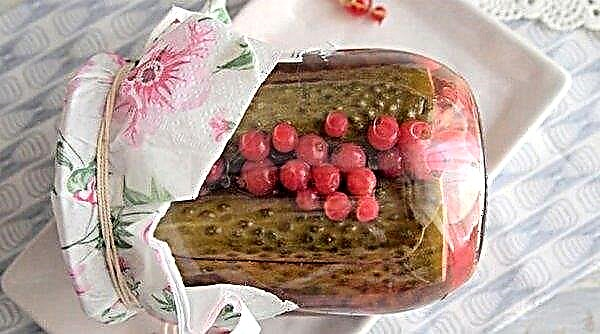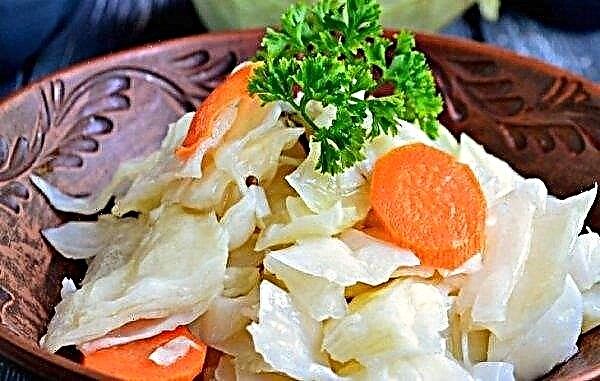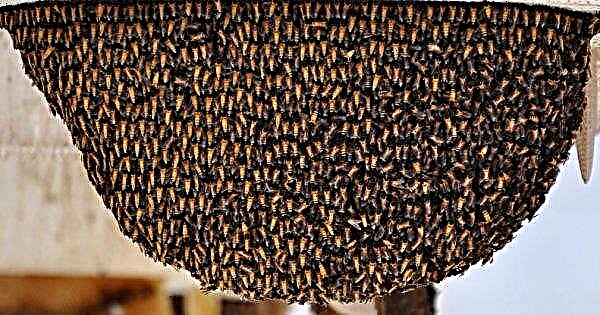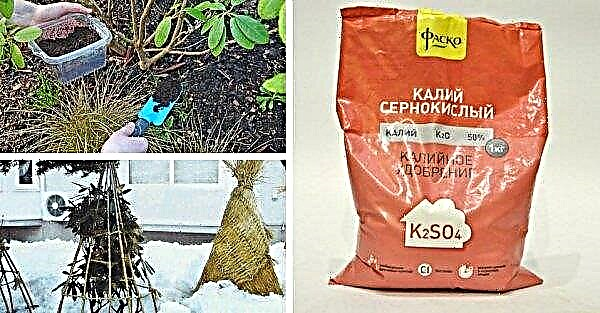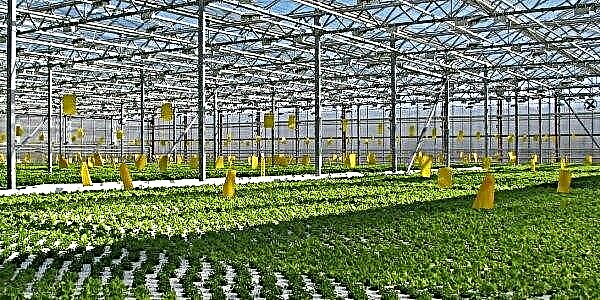The most common pests that eat cabbage grown in open areas are caterpillars. If urgent measures are not taken to prevent their spread, the crop will be completely destroyed. How to process the garden in order to quickly get rid of pests, and how to protect plantings from their repeated attack, read below.
Pest Description
Caterpillars that eat cabbage are butterfly larvae. Adult females lay their eggs on the inside of the cabbage leaves. For a short life cycle, butterflies reproduce 3 generations of their own kind. Each clutch contains 100 eggs.
Larvae emerging from eggs need a large amount of food in order to be able to move on to the next stage of development (pupa). In the caterpillar stage, butterflies can last from several days to several years, depending on the species. Caterpillars crawl to the surface of cabbage mainly at night, and during the day they hide inside a fork or closer to the base of the leaves (at the initial stage of plant vegetation).
Important! Caterpillars painted in bright, frightening colors and covered with a large number of hairs are most often poisonous. Upon contact with such insects, human skin is covered with a rash.
Immediately after hatching, the caterpillars are very thin, with a short body. As they grow older, their length increases by 15 times. The body color of the larva, depending on the species, can vary from green to dark brown. In the front of the body are 3 pairs of real legs, in the abdominal region - 3-4 pairs of false. Over the entire larval period, the insect molts several times. Ultimately, the caterpillar pupates and undergoes a complete process of metamorphosis, turning into an adult winged individual - an imago (butterfly).
A complete list of butterfly larvae that feed on cabbage leaves:
Signs and causes
The main reason for the appearance of such pests on cabbage beds is the failure to comply with the rules of agricultural technology regarding:
- tillage in the autumn-spring period;
- compliance with crop rotation rules;
- conducting preventive treatments and fertilizing;
- quarantine activities for newly acquired cultivated plants.
Did you know? In the body of the caterpillar, there are about 4,000 muscles, while in the human the body there are only 629 of them. The muscles in the body of the larva play the role of a bone skeleton.
The main signs of the presence of caterpillars in areas planted with cabbage:
- the presence of dark inclusions on the cabbage leaves is the excrement of the caterpillars, which inhibit the processes of photosynthesis and provoke the occurrence of fungal diseases;
- holes in the leaves;
- loss of turgor leaves (intracellular pressure);
- plant growth arrest.
What to do and how to get rid of the caterpillar on the cabbage
The solution to the problem of how to poison the caterpillars depends on the stage of plant vegetation. If at the initial stage, before the appearance of high-grade forks, it is permissible to use chemical protection, then in August, when there are already high-grade heads of cabbage, it is better to do without chemistry.
Otherwise, insects will die right inside the forks, which will significantly reduce the value of the crop and shorten the shelf life. In addition, chemicals have the ability to accumulate in plant tissues, which adversely affect the health of a person who consumes cabbage in food.
Pest control should be comprehensive. There are 3 main measures to eliminate pests:
- manual collection;
- use of chemicals;
- the use of folk remedies.
- loosening of the soil after each rain and watering: to a depth of 10 cm in the root circle and 15 cm in the aisles, with the associated harvesting of weeds;
- daily inspection of plants for pests and diseases;
- mulching the soil between the rows;
- top dressing with biological products or organics.
Manual collection
If pests appeared at the stage of leaf development and there are not too many of them, the collection of caterpillars and eggs is carried out manually. Such manipulations are best done in the morning or in cloudy weather during the day. To remove the maximum number of pests, you can sprinkle cabbage with sweet syrup at night or sprinkle the plants themselves and the area around them with wood ash. Such a move will create an obstacle to the movement of tracks.

So that adults do not continue to lay eggs on the site at night, they set traps with molasses, and in the morning they catch caught butterflies. Directly next to the bushes, small containers are installed in which honey and water are poured - such a treat attracts moths. An effective method of eliminating adults is to light bonfires in the evening. Moths fly into the light and die in the fire.
In combination with these methods, biologics are used for prophylactic purposes - the active substances of these agents help to effectively increase the immunity of plants. In this regard, Fitosporin-M proved to be quite good. The powder is diluted in water at room temperature in a ratio of 1: 2 and insist 1 hour; spraying is carried out on a leaf and soil. In addition to this, all of the above agricultural activities are carried out.
Did you know? The Japanese cultivate cabbage not only as a food product, but also as an ornamental plant. Cabbage heads, especially with an unusual color, look great in various flower arrangements on the flower beds.
Chemical treatment
Chemical preparations should be used at the initial stage of plant vegetation, before the formation of a fork, with a density of settlement of caterpillars of more than 7 individuals per 50 seedlings.
In the fight against caterpillars, the following drugs will be effective:
- Karbofos - 60 g of the powder preparation is diluted in 10 l of water. This amount of solution is enough to process 100 m². Before spraying plants with this poison, it is worth considering that it equally negatively affects not only pests, but also beneficial species of insects. Treatments are carried out in dry, calm weather from the evening.
- Aktara - 4 g of the drug is diluted in 3 l of water, after which each liter of concentrate is diluted in 9 l of water. 10 l of solution is enough for processing 2 acres. The drug of a new generation allows you to protect plants in all weather conditions. The action begins already 15 minutes after irrigation of plantings.
After treatment with chemicals, before watering the plants, you need to clean them from the remains of dead insects. Manipulations must be carried out with gloves. In combination with these drugs, after 20 days you need to conduct a double treatment with “Bitoxibacillin”.

This drug of biological origin stimulates the growth of plants, and also protects them from the re-emergence of pests. To do this, 35 ml of the drug is diluted in 5 l of water; between treatments, an interval of 7 days must be observed. Spraying is best done in the evening, or after moistening the soil.
With the help of folk remedies
Folk remedies will be effective in the last stage of plant development, when forks formed.
Important! A few days after treatment with sticky or soap compoundsneed to sprinkle. The procedure involves watering over the heads of cabbage, which allows you to wash off substances that inhibit photosynthesis, and dead pests.
The most effective options:
- infusion of wood ash and tar soap - 5 g of water add 100 g of ash and 1 tbsp. l Soaps, mix thoroughly and spray;
- baking soda - the powder is scattered on the surface of the forks, trying to fill it as deep as possible under the leaves;
- table vinegar 9% - 1 teaspoon essence per 1 liter of water, for spraying 100 m² you will need 10 liters of solution;
- sugar syrup - its use helps to attract wasps that will quickly destroy the caterpillars.
How to prevent the appearance of caterpillars
Preventive measures to prevent the propagation of caterpillars on the site require the following actions:
Recommended reading

- Compliance with crop rotation rules - cabbage is returned to its original place after 4 years; plant it after onions, carrots, cucumbers;
- High-quality preparation of the site for winter - in September after harvesting, it is necessary to clear the soil of plant debris and weeds, to conduct double deep cultivation of the soil with a bayonet shovel. Between cultivations, for the first time, irrigate the soil with 1% solution of copper sulfate, in the second - add organic matter.
- Soil cultivation in spring is similar to autumn, only at this stage it is better to replace copper sulfate with a biological product. Fitosporin-M is suitable (dilute according to the above instructions).
- Seedlings must be treated with "Epin" in the process of growing, according to the instructions, using it as the first top dressing.
- Throughout the entire growing season after planting on the site, loosen the soil, followed by mulching after each irrigation and rain.
- Timely apply fertilizers and carry out preventive treatment with biological products or folk remedies.

Useful tips gardeners
Some useful recommendations from experienced gardeners:
- After processing the plants from pests, cover them with a transparent thin net so that the butterflies can no longer come into contact with plant tissues and lay eggs on them. The main thing - before covering the cabbage, make sure that the larvae are destroyed.
- Plant tomatoes and celery next to cabbage. The smell of these plants repels butterflies.
- To destroy the caterpillars, collect ants, preferably with soil from the anthill, and sprinkle over the site. When the ants exterminate all the pests, they will also leave the site to look for a new source of nutrition.
- Paschykuyu tomatoes, do not rush to throw greens, lay it on the surface of the cabbage. As the stepsons dry out, replace them with fresh ones.
Did you know? The silkworm, pupating, produces a cocoon consisting of a continuous web 300–1500 m long.
Attacking the landing, the caterpillars are able to destroy the entire cabbage crop. But, with the implementation of the above recommendations and subsequent methods of prevention, they can be eliminated forever.



